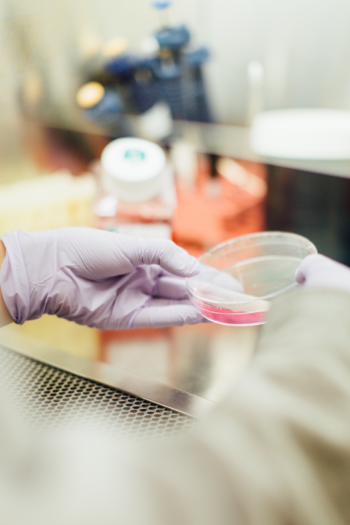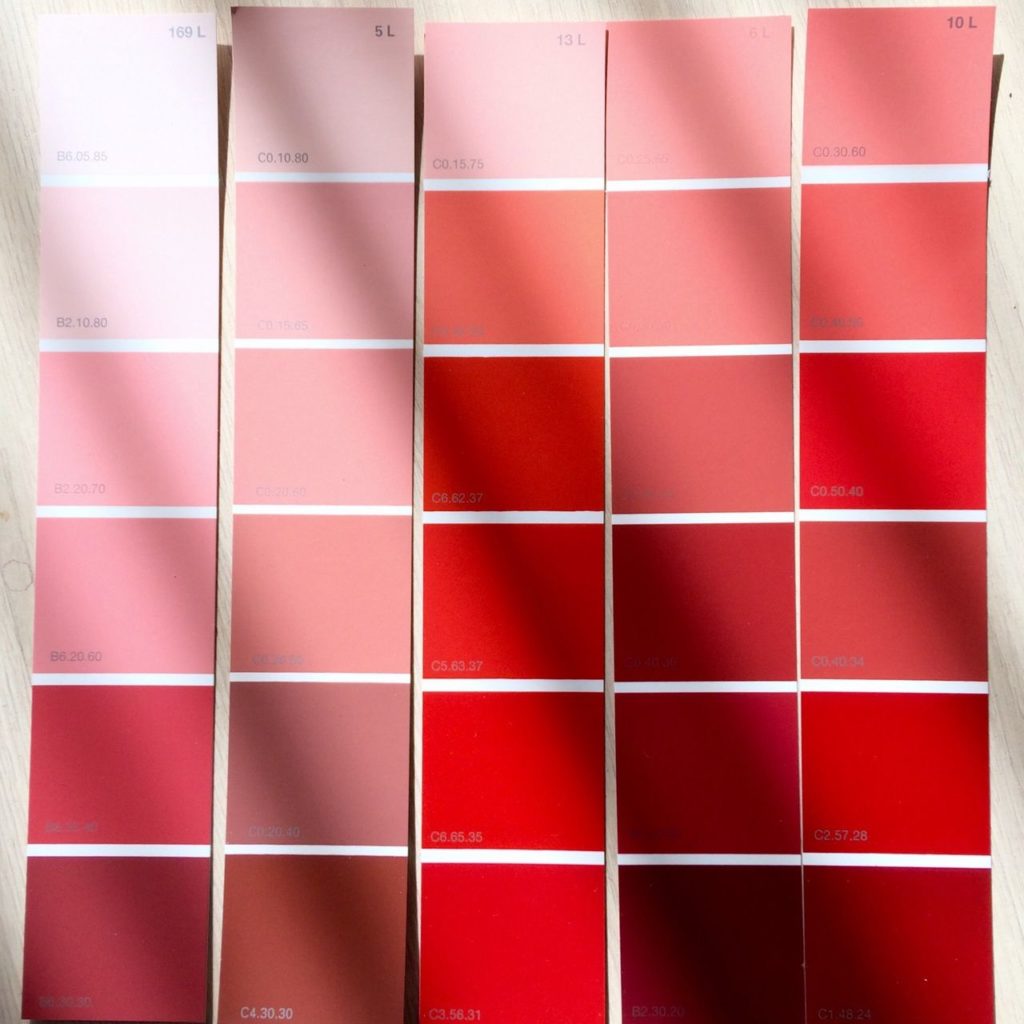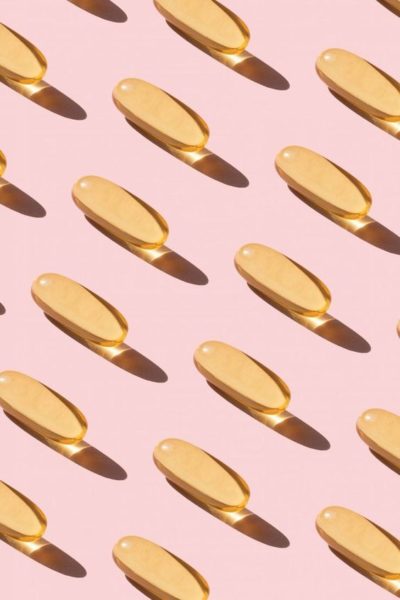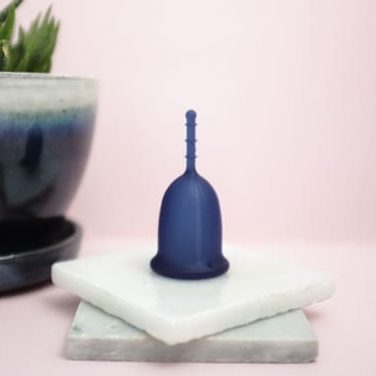Find out more about Toxic Shock Syndrome (TSS)? What precautions can be taken to avoid it? Can I still wear a menstrual cup? Claripharm answers you.🔎
The Toxic Shock Syndrome, we take stock of the situation
“Toxic Shock Syndrome is a rare but serious disease that can be fatal“.
We all read it at least once on the instructions of our hygienic protections, and we (maybe) panicked a little. What exactly is it? Who is at risk of developing this disease? What precautions can be taken to avoid it? We take stock with you of the scientific knowledge to date.
What is Toxic Shock Syndrome?
Toxic Shock Syndrome (or TSS)is a disease that can be caused by two types of bacteria: Staphylococcus aureus (mostly Staphylococcus aureus) and Group A Streptococcus. These bacteria are naturally present on the skin and mucous membranes of about 30 to 40% of the population, and do not cause problems in the vast majority of cases. However, sometimes these bacteria find a particularly good place to grow and can trigger TSS.
These hotbeds of development? A wound, a scar from a surgical operation or… the blood from menstruation. Approximately 50% of TSS cases occur in women who are menstruating or have just started menstruating; this is known as menstrual TSS. The other 50% develop in men, women, children, regardless of age or sex (usually from an infected wound).
After a certain time to develop in a wound or in the menstrual blood, Staphylococcus aureus will release a toxin that will spread in the blood and then in the whole body. This is the TSST-1 toxin. If the body does not know how to defend itself properly against this toxin, it will trigger an immune chain reaction because it is called a superantigen: the TSST-1 toxin will trigger a disproportionate immune response and the body will overreact, making the blood vessels porous, causing hypotension and multiple organ failure that can lead to death. As soon as the first symptoms appear, it is therefore necessary to act very quickly by removing the intra-vaginal device and urgently consult a doctor.
Good. That was the worst-case scenario! But there are many ways to recognize a TSS, and most importantly, to avoid it as much as possible.
What are the symptoms of Menstrual Toxic Shock Syndrome?
Symptoms may appear during menstruation or a few days after the end of menstruation.
Symptoms are similar to the flu: fever, nausea, vomiting, headache, aches and pains. It is also possible to have symptoms of shock, such as dizziness or discomfort due to low blood pressure and a rash similar to a sunburn. We repeat ourselves, but it is very important: as soon as the first symptoms appear, you must act very quickly by removing your tampon or cup and go see a doctor urgently.
 Statistically, what are the risks of developing Menstrual Toxic Shock Syndrome?
Statistically, what are the risks of developing Menstrual Toxic Shock Syndrome?
The figures are clear: out of 14 million women of menstrual age in France, 20 suffer from menstrual TSS per year (all with tampons), i.e. 0.0001%.
The risks of developing a TBS are therefore very limited, which would mean :
- Be part of the 30% of the population that is a natural carrier of Staphylococcus aureus.
- And again, to be part of the 4% of the population that is carrying a strain of Staphylococcus aureuscapable of producing TSST-1 (yes, not all of them are capable!).
- In addition, to be part of the 10% of the population that is not able to defend itself against the TSST-1 toxin.
Statistically speaking, therefore, there is really, really little risk of developing Menstrual Toxic Shock Syndrome. However:
- To date, there is no test available in pharmacies to determine if you are a carrier of Staphylococcus aureus,
- Even if this were the case, just because you are not a carrier at a given moment T does not mean that you will not become one later. It is considered that 50% of the population is intermittent carrier of Staphylococcus aureus.
- There is no test available in pharmacies to find out if you are immune to the TSST-1 toxin.
It is therefore impossible at this time to know if you are at risk of having TSS one day, so it is best to take all the precautions we will see below. You should find these recommendations on the package inserts for tampons, menstrual cups and any device intended for prolonged insertion into the vagina (diaphragm, sponge).
What can facilitate the onset of Menstrual Toxic Shock Syndrome?
Menstrual Toxic Shock Syndrome began to be heard about in the 1980s in the USA, when a brand of tampon, the Rely brand, caused an epidemic of 772 cases of menstrual TSS and 38 deaths. This brand of tampons was excessively absorbent, and menstrual TSS was not known, so some women kept the same tampon throughout their period (which of course is totally discouraged). Rely tampons were super-absorbent thanks to a synthetic material: carboxymethylcellulose, and it has been proven that it is this material that promotes the growth of Staphylococcus aureus.
Today, this material is no longer used in tampons, and precautions of use have been added: it has been since this Rely scandalthat tampon manufacturers indicate their absorption by means of small drops (to avoid wearing unnecessarily absorbent tampons, which promote menstrual TSS) and that the recommended wearing time is 4 to 8 hours. As a result of these measures, the number of menstrual TSS decreased significantly.
A recent scientific studyshows moreover that the composition of the tampons or cups currently on sale does not influence the growth of Staphylococcus aureus (phew!), we talk about it in more detail hereand there.
But at the risk of disappointing some of you, the cup does not protect against Menstrual Toxic Shock Syndrome…
It is the retention of menstrual blood in the vagina that causes Staphylococcus aureus to sometimes develop. After years of neglect, the subject of menstrual TSS is finally beginning to be seriously studied, and recent scientific publications on the subjectallow us to recommend these important precautions to take if you want to use a tampon or menstrual cup safely:
| Menstrual TSS Risk Factors | What can be done to reduce the risk? |
An immune system that doesn’t know how to defend itself |
Do not use an intravaginal device if you have ever had TSS (menstrual or not) or if you are severely immunocompromised. |
It’s finally not so complicated! In addition, Claripharm makes your life easier by offering you, for each size, a Duopack allowing you to change your cup during the day if you don’t have the possibility to disinfect it: you keep a clean cup in its box, which you take with you for the day, and after 6am, you can exchange it with the one you were wearing!
Why a study on the menstrual cup? (SCT)
You may have heard about it, a scientific study has recently been published and picked up in a lot of media with sometimes alarmist headlines about Toxic Shock Syndrome. Some have understood that the menstrual cupis more dangerous than tampons, others that the menstrual cup is not more dangerous, but just needs to be cleaned more often. And what do we do in all this? Today, we untangle the true from the false and the misunderstanding with you.


Who conducted this study?
The study was conducted by a team of French researchers based in Lyon. These researchers are part of the National Reference Center for Staphylococcus, an institution in charge of studying these small bacteria that cause us a lot of problems. In this study, they investigated whether tampons or menstrual cups promote the growth of Staphylococcus aureus, the bacterium responsible for Toxic Shock Syndrome.
What is Toxic Shock Syndrome?
Vous avez peut être entendu l’histoire de la mannequin Lauren Wasser, qui a perdu ses deux jambes suite à un Syndrome du Choc Toxique. Toxic Shock Syndrome (TSS) is caused by a bacterium, Staphylococcus aureus (Staphylococcus aureus) that produces a toxin, TSST-1, which is able to pass through the vaginal wall and spread throughout the body. The TSST-1 toxin can cause gangrene of the extremities and even shutdown of vital organs. Men, women or children can develop TSS, but 50% of TSS cases occur in women during or shortly after their period, and are referred to as Menstrual Toxic Shock Syndrome (TSS).
Why ? Because Staphylococcus develops particularly well in the menstrual blood. It should be remembered that SCT is very rare: out of 15 million women who menstruate in France, 15 cases of menstrual SCT are recorded each year, i.e. 0.0001%.
What is the aim of this study?
Menstrual TSS was discovered in the 1980s, when a super (hyper-giga-mega) absorbent tampon was introduced: the Rely tampon. Unfortunately, it caused approximately 772 cases of TSS and 38 deaths because its composition favoured the growth of Staphylococcus aureus. Since then, the Rely buffer has been withdrawn from the market, and its main component, carboxymethylcellulose, has been banned in buffers. It is also since this scandal that tampon manufacturers advise to change it every 4 to 8 hours, because the Rely tampon was so absorbent that women sometimes kept it during … all their periods!
Since the 1980s, new components have arrived in buffers, notably viscose. The team of scientists therefore investigated whether this new composition could play a role in the development of Staphylococcus and SCT. Many manufacturers of menstrual cups (not including Claripharm) and organic cotton tampons claim that their products protect against Toxic Shock Syndrome. So they wanted to find out if this was really the case.
How were tampons and menstrual cups evaluated?
It was not possible to ask women to wear tampons for as long as possible and put their lives at risk. Researchers have therefore reproduced the conditions in which tampons or cups are found once in the vagina, during menstruation. To do this, they used plastic bags (to reproduce the vagina), 15 mL of a liquid reproducing menstrual blood, a strain of staphylococcus aureus taken from a woman who suffered from TSS, and of course, a conventional tampon, an organic tampon or a cup.
Aha, the Cliff Hanger! What were their results? Does it change anything for me?
Read more about it here.
Menstrual Cup and Toxic Shock Syndrome
What are the results of the study?
After placing the pads or cups in individual plastic bags in a culture medium and in the presence of Staphylococcus aureus, they placed them at 37°C for 8 hours.
After 8 hours, the researchers measured the growth of Staphylococcus aureus and the production of the toxin TSST-1.
Already, good news:
No device accelerates the growth of Staphylococcus aureus, so we are not at risk of having an epidemic of Toxic Shock Syndrome.
But also precautions to be taken:
- No tampon, bio buffer or cup protects against Toxic Shock Syndrome. And most importantly: no tampon, bio tampon or cup should be worn for more than 8 hours. For the researchers observed a production of the TSST-1 toxin in all cases. Unfortunately, they did not measure the growth of Staphylococcus aureus before these 8 hours, so it is difficult to make recommendations for all products.
On the other hand, before the publication of this study, the Claripharm Laboratory commissioned a study on the wearing time of the Claricup, which allows us to ensure maximum safety for 6 hours with the Claricup. Details of the Claricup menstrual cup study are available here. Our study is very similar to the one we are talking about today, with the difference that we measured the growth of Staphylococcus aureus every hour for 12 hours.
- You have to choose your cup according to its flow. Because the size of menstrual cups seems to play a role in the growth of Staphylococcus aureus and the production of TSST-1. The composition of the cups is not decisive, it is the oxygen supply that is important. The larger a menstrual cup is, the more oxygen it provides. It is important to remember that the cup must still be able to contain the flow, and that the faster the menstrual cup fills up, the less oxygen there is.
- The cup must be disinfected before each insertion. Because Staphylococcus aureus remains fixed on the menstrual cups and a simple washing with water is not enough to remove it. Researchers indicate that it is therefore important to disinfect the cups before each insertion, otherwise there is a risk of re-contamination with Staphylococcus aureus. They therefore suggest that users have 2 cups to be able to change them more easily during the day.
How to use your menstrual cup safely?
Unlike other devices, menstrual cups need to be cleaned regularly. Other manufacturers claim 12 hours without leaks, but you can’t keep up such a marketing argument if it puts lives at risk. For this reason, the Claripharm Laboratory recommends a wearing time of 6 hours, as well as systematic cleaning and disinfection between each insertion. It’s for you, for your health ladies. Because we are the first ones, we don’t want to lose a leg just because we got our period.
It should also be remembered that this study only concerns Toxic Shock Syndrome. For the moment, unfortunately, no study has been carried out on the endocrine disruptors found in certain hygienic protections (endometriosis is classified by the Institut de Veille Sanitaire as potentially related to endocrine disruptors), nor on the impact of tampons (which absorb everything) or cups (which only collect menstrual periods) on the vaginal flora, essential to the health of our intimacy. Translated with www.DeepL.com/Translator (free version)
How does Claripharm Laboratory take care of me?
Each Claricup is systematically provided with its disinfection box, to make your life easier: it is sometimes more practical to disinfect it in a microwave oven than in a pot of boiling water!
 We also offer Duopacks of 2 Claricup and 2 boxes at a reduced price, so that you always have a clean cup available during the day: you insert one cup in the morning, the other clean cup is in its box, in your bag and after 6 hours, you just have to exchange it in the bathroom. That’s what the box is also for! Thanks to it, you don’t risk to stain your stuff with a used cup while waiting to clean everything quietly at home.
We also offer Duopacks of 2 Claricup and 2 boxes at a reduced price, so that you always have a clean cup available during the day: you insert one cup in the morning, the other clean cup is in its box, in your bag and after 6 hours, you just have to exchange it in the bathroom. That’s what the box is also for! Thanks to it, you don’t risk to stain your stuff with a used cup while waiting to clean everything quietly at home.
We also advise you to choose your Claricup according to your flow. Other parameters can play a role in the choice of your size, such as the musculature of your perineum or the size of your vagina, but unless you are a midwife or gynaecologist, this is something few of us can evaluate. On the other hand the flow, that we know!
Claripharm Laboratory’s commitment is simple: to provide you with the healthiest products possible, for ever greater safety. That’s why we all lead the way. these studies, which we obtain the certifications that guarantee you the safety of Medical Devices, that we have done 22 tests on raw materials and Claricup, and that every day we work to provide you with all the right information and the right products.
This study is an opportunity to learn more about alternatives to traditional periodic protection. Above all, it is an opportunity for you, the user, to be fully informed of good usage practices in order to protect your health.
We’re all concerned about the rules, so it’s time to talk about it!
Do you have further questions about the daily use of your menstrual cup? Write on social networks or by email to: contact@claripharm.fr

















